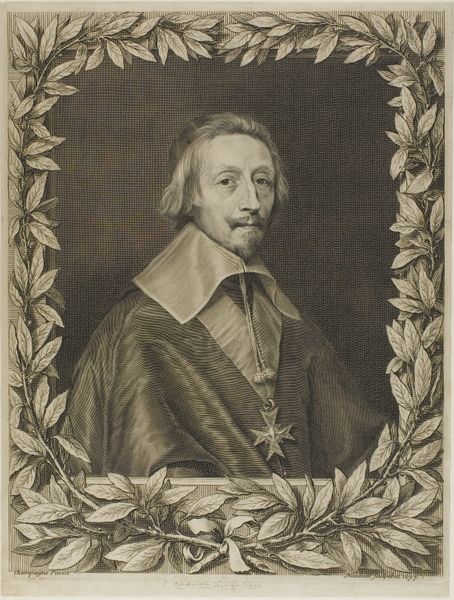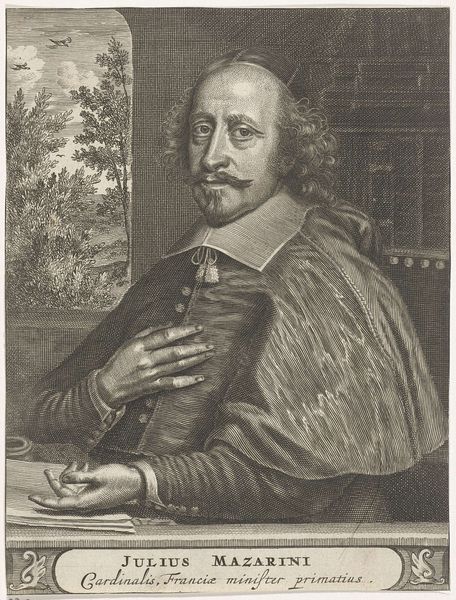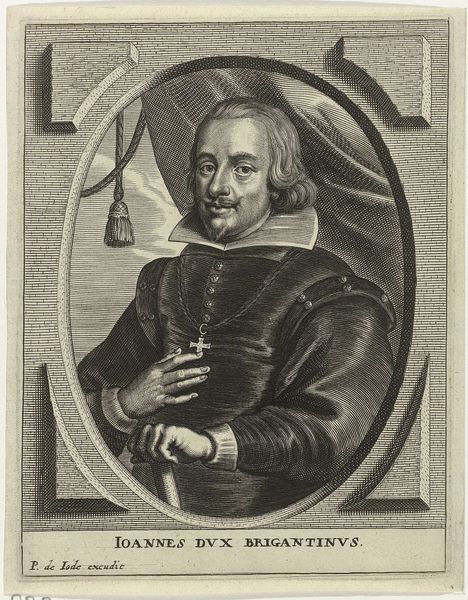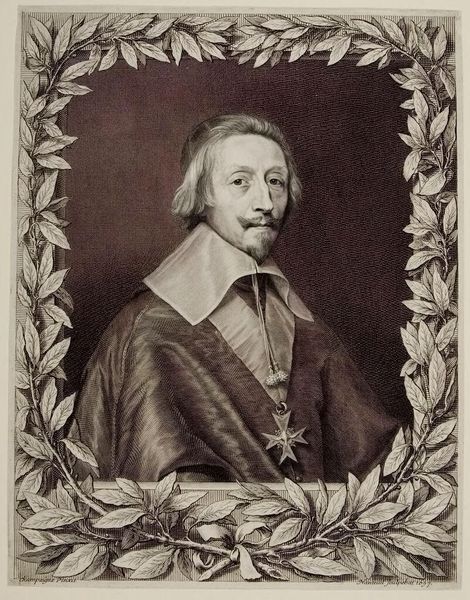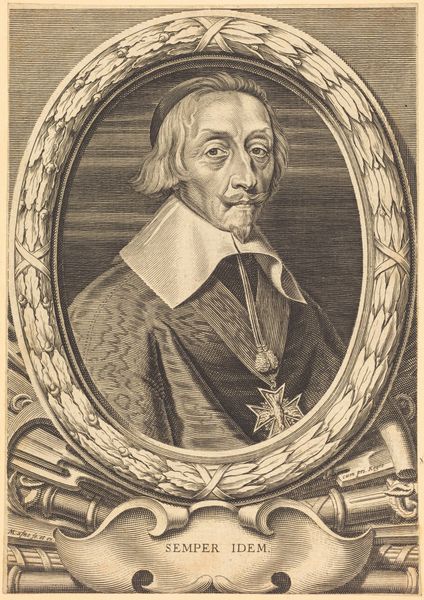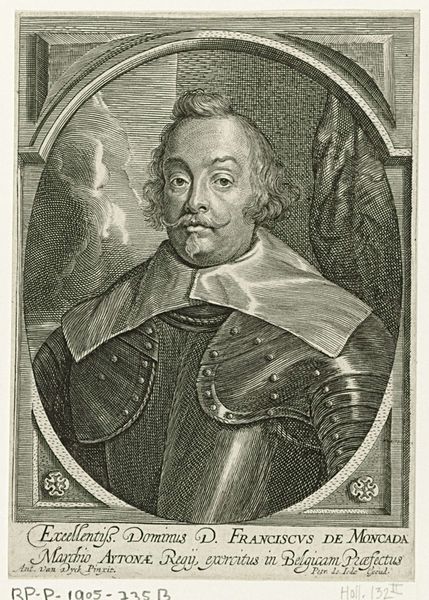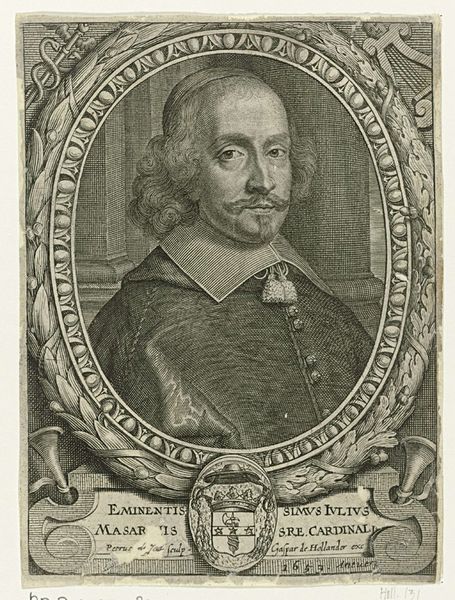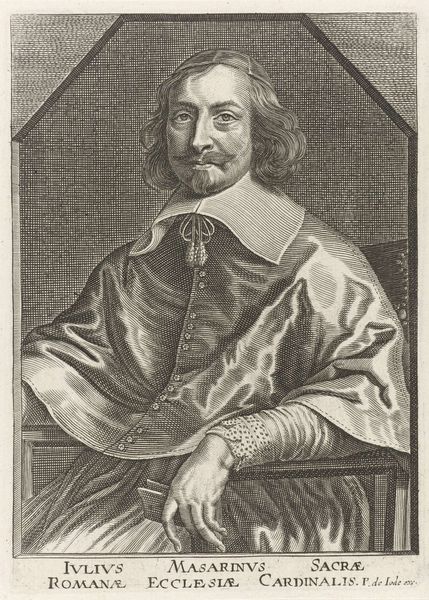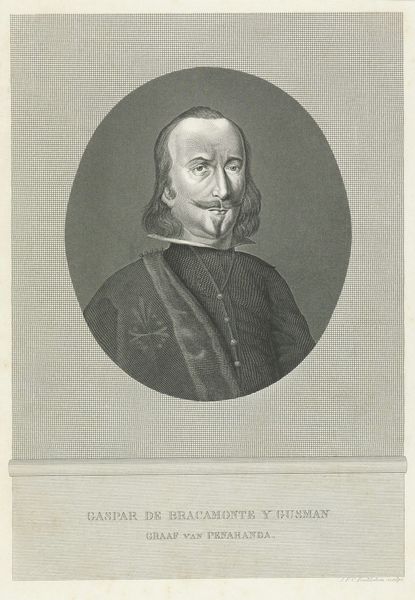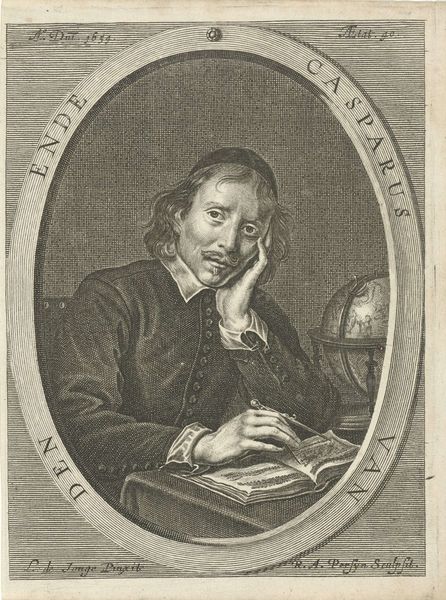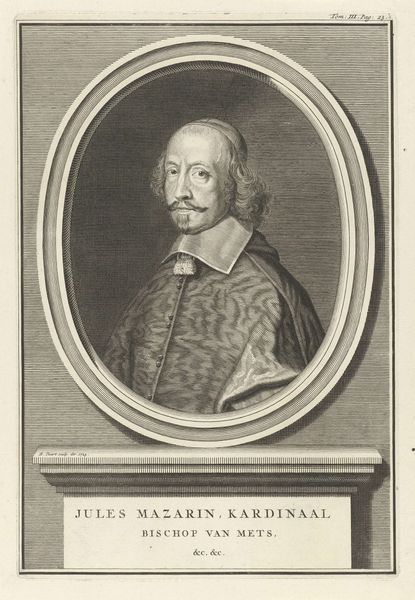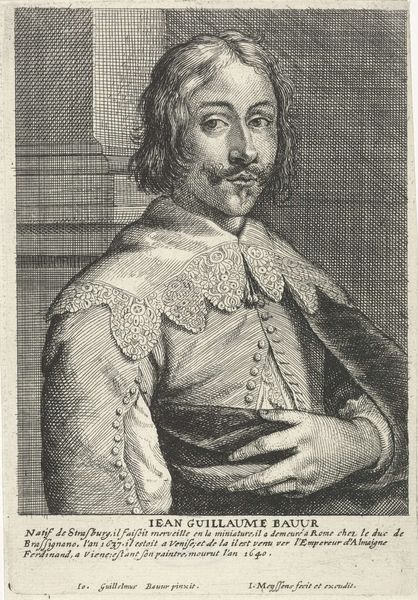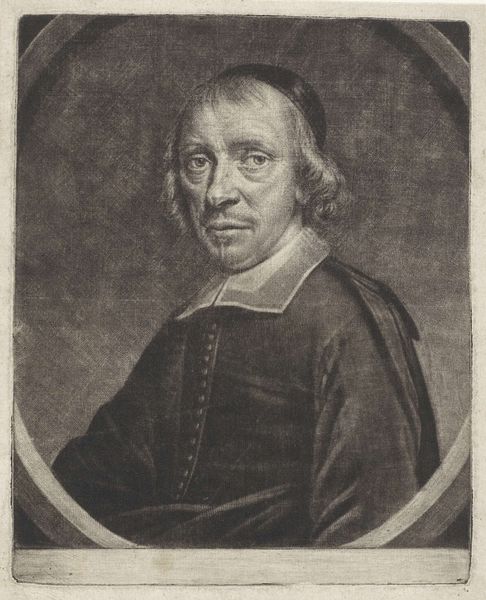
Portret van Armand-Jean du Plessis, hertog van Richelieu c. 1663 - 1695
0:00
0:00
engraving
#
portrait
#
baroque
#
old engraving style
#
caricature
#
portrait reference
#
portrait drawing
#
history-painting
#
engraving
Dimensions: height 182 mm, width 142 mm
Copyright: Rijks Museum: Open Domain
Curator: Looking at this engraving, I’m immediately drawn to the textures achieved through the meticulous hatching – it almost vibrates with energy. Editor: Indeed. What we're observing here is "Portret van Armand-Jean du Plessis, hertog van Richelieu," likely created between 1663 and 1695. It's housed here at the Rijksmuseum. Think of the process: the engraver meticulously cutting into a metal plate, transferring image to paper – that's the act of labor we are actually witnessing! Curator: There's something unsettling in his gaze. It hints at both power and profound loneliness. I imagine him wrestling with affairs of state, perhaps scribbling decrees late into the night under flickering candlelight. Don’t you get a sense of drama? Editor: Yes, of course. But this drama, from my view, is intricately tied to the materials and their availability in the 17th century. Engravings allowed for wider dissemination of images – effectively democratizing Richelieu's image and extending his influence far beyond the royal court. This piece speaks volumes about media, circulation, and social control, too. Curator: Absolutely. The artistry enhances the power, though. I love the way light and shadow play across his face, almost as if to suggest he inhabits two worlds: the visible and the hidden. The very controlled gesture of his hand resting on that paper seems to emphasize that idea. Editor: It is also worth emphasizing how printmaking itself blurred the boundaries between craft and high art, or production for the court versus production for sale, creating a whole system of images for both aristocratic and merchant patronage. The textures achieved via engraving, as you initially stated, aren’t accidental, they are part of what made the media commercially viable and influential in social change. Curator: You make an important point. It's easy to get lost in the romance of history and overlook the work itself that has gone into every aspect of it. Next time I see this image, I won't forget the engraver's skillful work. Editor: Absolutely. Next time I gaze upon Richelieu, I’ll be reflecting about the image’s accessibility. A complex dance of power, media and artistry, indeed!
Comments
No comments
Be the first to comment and join the conversation on the ultimate creative platform.
